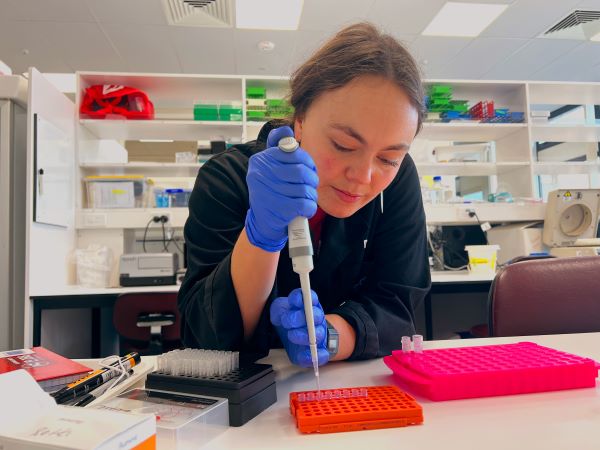
Working together to build climate resilience of kaimoana

Dr Roseanna Gamlen-Greene in the laboratory (photo Josh Byford-Pothan)
Marine heatwaves threaten ecosystems worldwide, with these events increasing in frequency in Aotearoa. There are reports of some localised kaimoana mortalities following marine heatwaves, but we do not fully understand how kaimoana are responding to marine heatwaves. Kaimoana, an essential mahinga kai, are already declining due to factors such as over-fishing and ecosystem changes, with climate change exacerbating this. This project will co-produce research with hapori Māori and other local community members in southern Aotearoa to establish a baseline for the resilience and vulnerability of kaimoana such as pāua, kina and kōura to marine heatwave events, with the goal of providing knowledge that will be useful in managing these taonga species in a future impacted by climate change. Are some populations of pāua, kina and kōura more or less resilient to marine heat waves than others? The main method we will use to answer this question is transcriptomics: sampling RNA (copies of small sections of DNA that code for genes) to find out what heat stress genes are being used by kaimoana. I will investigate whether kaimoana in different regions are more heat stressed, if this depends on size, and how whakapapa/relatedness varies regionally. The communities involved in this project researching pāua are the East Otago Taiāpure - including Kāti Huirapa ki Puketeraki - near Karitane, and the Makaawhio Mātaitai near Haast. I am in the process of asking whether several other hapū in other regions would like to join. I hope the resulting data will be useful for Taiāpure, Mātaitai committees and mana whenua in kaitiakitanga of these taonga.
